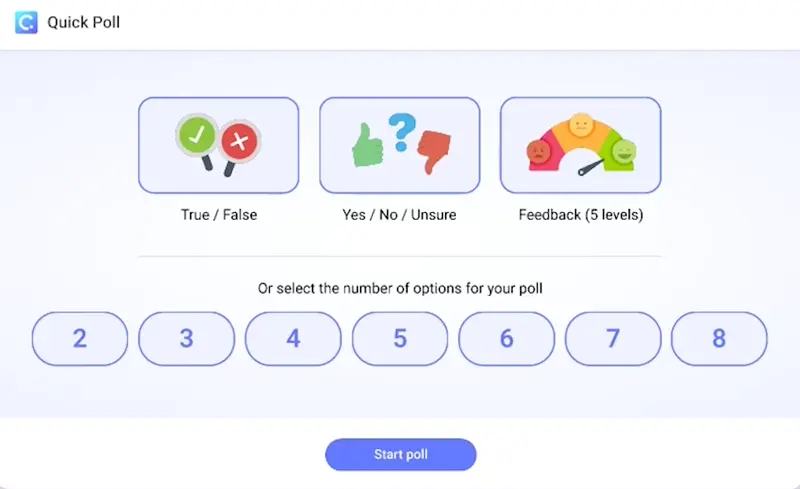Who can forget the teachers who once stood in front of our classrooms, pushing us to step out of our comfort zones because they saw what we could become? No wonder, they are still memorable even if many years have passed. These are the teachers who embody the heart of a warm demander.
A warm demander is not just about being strict or demanding. First coined by Judith Kleinfeld, Lisa Delpit explains that warm demanders “expect a great deal of their students, convince them of their own brilliance, and help them reach their potential in a disciplined and structured environment.”
Today, this approach is more needed than ever. Teachers must find the balance between showing care and holding high expectations, pushing students to live up to what they are truly capable of. Up next, let’s delve deeper into the key traits that make a warm demander.
What Makes a Warm Demander?
Before embarking on becoming a warm demander for your students, you need to start with yourself. Your perceptions, your approach to the classroom, and the way you interact with students all set the tone.
In Culturally Responsive Teaching and the Brain, Dr. Zaretta Hammond outlines three important steps:
- Understand your own cultural reference points: Allot the time to reflect on your own background, experiences, and values. They shape how you see the world and how you see your students. Being aware of your own lens helps you avoid making quick judgments and builds a stronger connection between you and your students.
To ensure that both you and your students are closely referencing cultures as common ground for mutual respect, here are 6 Unbeatable Strategies for Culturally Responsive Classroom Management.
- Practice self-management: Undeniably, teaching will always test your patience. The key is not just staying calm but learning how to manage your emotional reactions in the moment. Students notice how you respond, especially when difficult moments arise. Thus, staying grounded helps you act with clarity and care instead of frustration.
As you regulate your own emotions, it's important to get students to regulate theirs, too. Check out this list of 10 Effective Emotional Regulation Activities For Students of All Ages.
- Widen your interpretation aperture: Students do not all think, communicate, or learn the same way. That is not something that needs fixing, but something that needs understanding instead. Be willing to rethink assumptions about why students behave the way they do. Many behaviors that seem disrespectful or disengaged could reflect different cultural ways of learning, interacting, and communicating.
Now that we’ve covered the first steps, let’s take a closer look at what it truly means to be a warm demander in the classroom. Here are some key characteristics to keep in mind:
- Expresses personal warmth, not just impersonal professionalism: Students need to feel that their teacher genuinely cares about them as people. A warm demander connects on a human level, using kindness, encouragement, and positive energy instead of relying only on formal rules or distant authority.
- Prioritizes building rapport and trust: Trust doesn’t happen overnight. It is earned through daily interactions, small moments of listening, and consistent follow-through. A warm demander understands that without trust, students are less likely to take risks or respond to challenges.
- Clearly communicates high standards and supports students in reaching them: High expectations are only meaningful if students know what success looks like and believe they can achieve it. A warm demander breaks down the steps, provides the right support, and walks beside students until they are ready to succeed on their own.
- Shows genuine personal regard for students: This means seeing students beyond their numerical grades. A warm demander values students’ backgrounds, interests, and dreams, making sure they feel respected, heard, and understood in the classroom.
- Earns the right to demand engagement and effort: Before expecting students to work hard, a warm demander proves their own commitment first. This entails a commitment to fairness, consistency, and standing by students during tough times. Demanding engagement is about building a partnership, not about imposing obedience.
- Encourages and celebrates productive struggle. Mistakes, confusion, and setbacks are inevitable in learning. Hence, a warm demander normalizes the struggle, celebrates effort and persistence, and reminds students that real growth often comes after discomfort.
Now that you’ve taken the time to reflect on what it means to be a warm demander, it is important to take it up a notch. In the next section, we will break down the four core principles that bring the warm demander approach to life in the classroom and guide how teachers connect, challenge, and support their students daily.
4 Core Principles Behind Warm Demander
As part of their commitment to developing culturally relevant pedagogy, the staff at June Jordan School for Equity created a detailed framework and training series on how to become a true “warm demander” in the classroom.

Below, we will walk through each of these principles to help guide you in building a warm demander-centered environment for your students.
| Core Principle | Key Focus | Classroom Applications |
|---|---|---|
| Growth Mindset | Abilities and intelligence can grow through effort, learning, and persistence. | Use ClassPoint’s Award Star to reward perseverance and positive learning behaviors. |
| Plant the Seeds of Trust | Build strong, authentic relationships through listening, connecting, and showing vulnerability. | Share personal stories, smile often, and learn about students’ lives and interests. |
| Develop Self-Discipline | Model and teach the value of hard work, consistency, and responsibility. | Set timers, model punctuality, and celebrate meeting deadlines and commitments. |
| Make Room for Failure | Normalize mistakes as part of learning and encourage reflection and resilience. | Use exit tickets and ClassPoint’s Quick Poll to gather feedback and reflections. |
Growth Mindset
A growth mindset is built on the belief that abilities and intelligence are not fixed. They can be developed through dedication, effort, and the willingness to learn from mistakes. Challenges and setbacks are not seen as signs of failure but as stepping stones for improvement.
As an educator, you have the powerful role of showing students what they are capable of becoming. Imagine seeing your students from underrepresented backgrounds as future leaders, innovators, and changemakers. If you believe it, you will be able to pass that vision on to them.
To help nurture a growth mindset, you can use educator-focused tools that engage and reward students for their performance in the classroom. If you're an active PowerPoint user, consider ClassPoint, a direct add-in to PowerPoint that gives you access to interactive tools with an engineered gamified reward system to keep your students motivated and excited for growth.
Plant the Seeds of Trust
Warm demanders know that trust must come first before real learning can happen. Building trust requires more than polite interactions. It takes time, genuine listening, and a real effort to learn about your students’ lives, cultures, and interests.
Trust also grows when you show authenticity. When students see you smile, laugh, or share a piece of yourself, you humanize the relationship and create a space where students feel safe to take risks and engage fully.
Develop Self-Discipline
Modeling self-discipline is one of the most powerful lessons you can give your students.
Teaching self-discipline is not about enforcing strict classroom rules. It is about helping students understand that high standards come from a place of respect. Students who learn self-discipline are better prepared for real-world challenges, whether that means meeting deadlines, following through on commitments, or pushing through tough moments.
You can reinforce this by using simple strategies like setting timers during activities, encouraging punctuality, and demonstrating the value of sticking to schedules. Over time, students will see that discipline is not a punishment. It is a pathway to success.
Check out our top picks on the 4 Best Free Online Classroom Timer Tools Every Teacher Must Know!
Make Room for Failure
Being a warm demander is all about creating space for mistakes and treating them as a natural and necessary part of learning. Failure offers valuable feedback on where students need more support and growth. It also builds resilience, reflection, and the ability to keep going even when things get hard.
Give students regular opportunities to reflect on their progress. Use simple tools like exit tickets to help them think about what went well, where they faced challenges, and what lessons they can take forward.
💡 Pro Tip: You can make this process even more engaging by using ClassPoint’s interactive features like Quick Poll to quickly gather their thoughts and reactions in real-time. By normalizing failure, you build a classroom culture where students stay motivated, take risks, and see setbacks as steps toward success.

Final Thoughts: Why Warm Demanders Shape the Future of Your Students
At its core, being a warm demander is about balancing high expectations with deep care. It is about showing students that you believe in their potential so strongly that you will not lower the bar, but you will stay with them until they reach it. When warmth and high standards work together, students not only achieve more, they also start to believe more in themselves.
As you move forward, take a moment to reflect on how you can bring the warm demander mindset into your own classroom. How do you show your belief in your students and your commitment to their growth? Every small choice, every conversation, and every expectation you set can either push students closer to their potential or pull them back. Choose to be the teacher who pushes with care, believes without limits, and never stops building the path for students to see what they are truly capable of becoming.
FAQs
What is a warm demander in education?
A warm demander is a teacher who balances high expectations with personal warmth. They build strong relationships with students while pushing them to meet rigorous academic and behavioral standards.
Why is being a warm demander important for teachers?
Being a warm demander helps students feel supported while challenging them to grow. This approach builds resilience, trust, and a strong belief in their own potential.
How can I become a warm demander in my classroom?
To become a warm demander, focus on building authentic relationships, clearly communicate high expectations, model self-discipline, and create space for students to learn through failure.
What are the key principles of a warm demander approach?
The warm demander approach is rooted in four core principles: cultivating a growth mindset, building trust, developing self-discipline, and normalizing failure as part of learning.
How does a warm demander classroom benefit students?
A warm demander classroom creates an environment where students feel valued, supported, and challenged. This helps them build confidence, perseverance, and a stronger sense of academic ownership.

